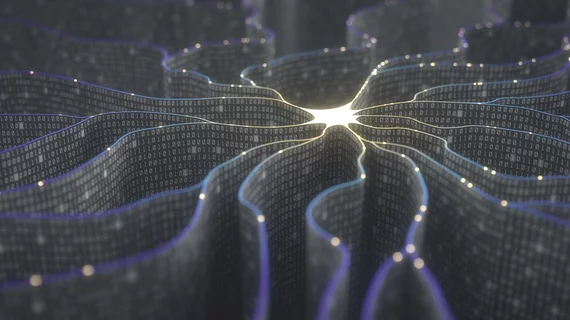Professional imaging societies publish ‘roadmap for AI’ in radiology
Researchers from the National Institutes of Health, Radiological Society of North America, American College of Radiology and Academy for Radiology and Biomedical Imaging Research have published what they’re calling a “roadmap for AI” in medical imaging—a framework for accelerating foundational research in the field.
The roadmap, published as a special report in Radiology April 16, is the product of a workshop held at the NIH headquarters in Bethesda, Maryland, last August. According to an RSNA release, the meeting aimed to foster collaboration for advancing AI in diagnostic imaging, identify gaps in our knowledge of the technology and prioritize scientists’ research needs.
“The scientific challenges and opportunities of AI in medical imaging are profound, but quite different from those facing AI generally,” Curtis P. Langlotz, MD, PhD, lead author of the paper, said in the release. Langlotz is a professor of radiology and bioinformatics and director of Stanford University’s Center for Artificial Intelligence in Medicine and Imaging.
“Our goal was to provide a blueprint for professional societies, funding agencies, research labs and everyone else working in the field to accelerate research toward AI innovations that benefit patients.”
AI research is still in its infancy, but Langlotz et al. said machine learning algorithms will transform clinical imaging practices over the next decade, reducing noise, improving image reconstruction and assisting in tasks like quality assurance and triage. The team’s research priorities included new image reconstruction methods, automated image labeling and annotation methods, new machine learning methods for clinical imaging data and validated methods for image de-identification and data sharing.
The researchers also pushed for the development of machine learning methods that are able to rationalize their own advice, known as explainable AI. Recently, a project at Georgia Tech produced an AI tool that was able to rationalize its actions while it worked through a classic arcade game.
These kinds of innovations would ideally spur the production of more publicly available, validated and reusable data sets against which scientists can evaluate newer algorithms, Langlotz and colleagues said. Researchers also need to develop pre-trained models that are tailored for clinical imaging data, which can contain countless annotations.
Mary C. Mahoney, MD, chair of the RSNA Board of Directors, stressed in the release the importance of professional societies, standards bodies and governmental agencies getting involved in the work.
“RSNA’s involvement in this workshop is essential to the evolution of AI in radiology,” she said. “As the Society leads the way in moving AI science and education forward through its journals, courses and more, we are in a solid position to help radiologic researchers and practitioners more fully understand what the technology means for medicine and where it is going.”

